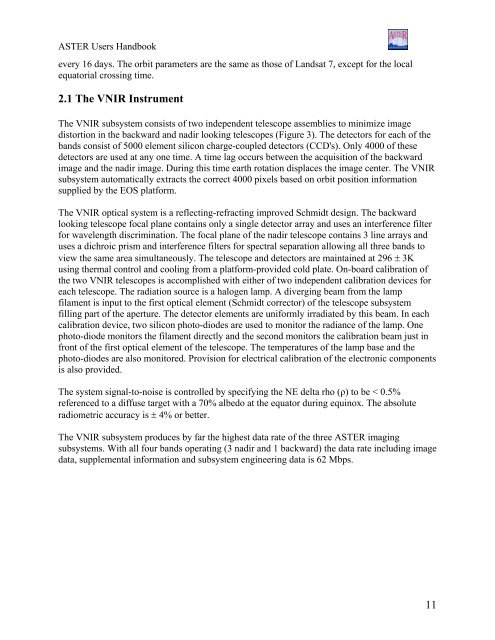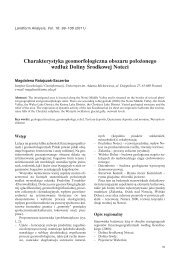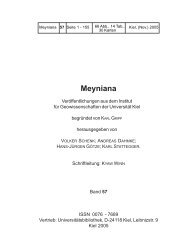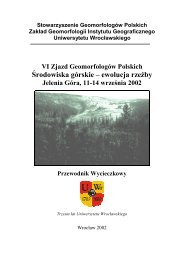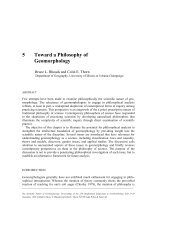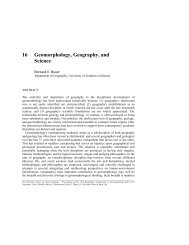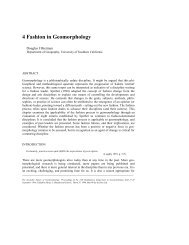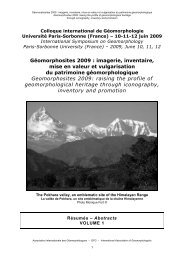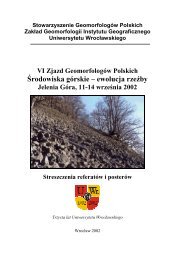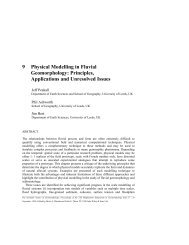ASTER User's Guide - Aster - NASA
ASTER User's Guide - Aster - NASA
ASTER User's Guide - Aster - NASA
You also want an ePaper? Increase the reach of your titles
YUMPU automatically turns print PDFs into web optimized ePapers that Google loves.
<strong>ASTER</strong> Users Handbook<br />
every 16 days. The orbit parameters are the same as those of Landsat 7, except for the local<br />
equatorial crossing time.<br />
2.1 The VNIR Instrument<br />
The VNIR subsystem consists of two independent telescope assemblies to minimize image<br />
distortion in the backward and nadir looking telescopes (Figure 3). The detectors for each of the<br />
bands consist of 5000 element silicon charge-coupled detectors (CCD's). Only 4000 of these<br />
detectors are used at any one time. A time lag occurs between the acquisition of the backward<br />
image and the nadir image. During this time earth rotation displaces the image center. The VNIR<br />
subsystem automatically extracts the correct 4000 pixels based on orbit position information<br />
supplied by the EOS platform.<br />
The VNIR optical system is a reflecting-refracting improved Schmidt design. The backward<br />
looking telescope focal plane contains only a single detector array and uses an interference filter<br />
for wavelength discrimination. The focal plane of the nadir telescope contains 3 line arrays and<br />
uses a dichroic prism and interference filters for spectral separation allowing all three bands to<br />
view the same area simultaneously. The telescope and detectors are maintained at 296 ± 3K<br />
using thermal control and cooling from a platform-provided cold plate. On-board calibration of<br />
the two VNIR telescopes is accomplished with either of two independent calibration devices for<br />
each telescope. The radiation source is a halogen lamp. A diverging beam from the lamp<br />
filament is input to the first optical element (Schmidt corrector) of the telescope subsystem<br />
filling part of the aperture. The detector elements are uniformly irradiated by this beam. In each<br />
calibration device, two silicon photo-diodes are used to monitor the radiance of the lamp. One<br />
photo-diode monitors the filament directly and the second monitors the calibration beam just in<br />
front of the first optical element of the telescope. The temperatures of the lamp base and the<br />
photo-diodes are also monitored. Provision for electrical calibration of the electronic components<br />
is also provided.<br />
The system signal-to-noise is controlled by specifying the NE delta rho (ρ) to be < 0.5%<br />
referenced to a diffuse target with a 70% albedo at the equator during equinox. The absolute<br />
radiometric accuracy is ± 4% or better.<br />
The VNIR subsystem produces by far the highest data rate of the three <strong>ASTER</strong> imaging<br />
subsystems. With all four bands operating (3 nadir and 1 backward) the data rate including image<br />
data, supplemental information and subsystem engineering data is 62 Mbps.<br />
11


